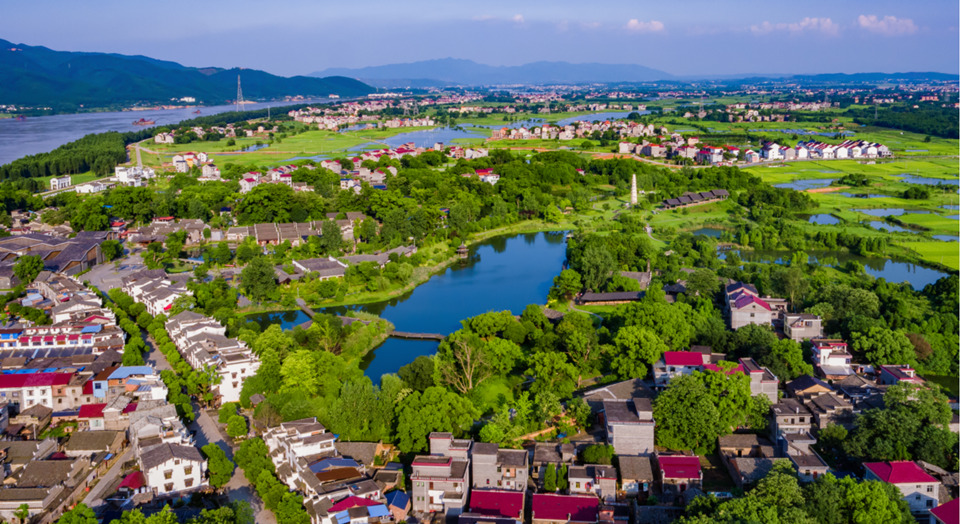Jizhou Kiln is located in Yonghe Town, Ji'an City, Jiangxi Province, approximately 8 kilometers north of Ji'an City. From Sui to Song, Ji'an was called Jizhou, hence its name. Within a range of about 2 kilometers long and 1 kilometer wide on the west side of Yonghe Town, there are numerous abandoned kilns, with porcelain pieces and kiln utensils scattered everywhere. Today, there are still long streets and ancient roads paved with casket bowls and kiln bricks in Yonghe Town, which is the location of the ancient county seat of Dongchang. Dongchang is under the jurisdiction of Jizhou, hence its name "Jizhou Kiln", also known as "Yonghe Kiln".
Yonghe has a superior geographical location and developed water transportation. To the south of the upstream is Taihe County, and to the north of the downstream is only more than ten kilometers away from the county seat of Luling County (now Ji'an City). In the early Tang Dynasty, after the Prime Minister Zhang Jiuling chiseled through Dayu Ridge, the the Pearl River and the Yangtze River were connected, and the Ganjiang River with abundant water became the ancient "golden waterway", which merged into the national backbone transportation network. Yonghe, located on the west bank of the Ganjiang River, naturally became an important dock on the busy waterway of the Ganjiang River. Heading up the river, you can reach Taihe, Wan'an, Suichuan, Ganzhou, Guangdong, and then sail from the the Pearl River to Southeast Asia and Central Asia; Going downstream along the river, you can reach Ji'an, Zhangshu, Nanchang, and Jiujiang, then enter the Yangtze River, and then go out to sea to reach Northeast Asia. At the same time, the Gan River is connected to various tributaries such as Heshui, Shushui, Lushui, and Fushui, and can reach the hinterland of Jiangxi and even nearby provinces from Yonghe.
At the same time, the development of water transportation has also contributed to the development of the shipbuilding industry. According to relevant historical records, during the Northern Song Dynasty, the shipbuilding volume in Ganzhou and Jizhou accounted for more than one-third of the total in the country. Craftsmen in the Song Dynasty had already mastered the first-class shipbuilding technology in the country at that time, and were able to build large pointed bottomed ships that were more than ten zhang long, three zhang deep, and two zhang five feet wide, with a load capacity of two thousand mu. The Song Dynasty made great strides in ship equipment and navigation technology, including mastering a series of methods such as berthing, driving, anchoring, turning sails, and surveying, greatly improving shipping efficiency. As a result, Jizhou kiln porcelain was able to be sold to various countries in the north, south, and overseas through a convenient waterway transportation network.
Jizhou Kiln is located in the southeast corner of Ji'an County, with a subtropical monsoon climate of about 27 degrees north latitude and 115 degrees east longitude. It is situated in the alluvial fan plain where the He River flows into the Gan River. The climate in this area is warm, the terrain is flat, and irrigation is convenient. It is known as the "land of fish and rice", with sufficient food to supply thousands of households.
At the same time, due to the unique geological structure, the hills in Yonghe and the Fenggang Ridge in Qingyuan Mountain across the Gan River contain a large amount of porcelain clay resources. Zhou Bida, a famous minister of the Southern Song Dynasty and a native of Yonghe, recorded in his "Leisure Residence Record" what he saw and heard during his trip to Jigang Mountain: "He then went up to Jigang, facing the mountains of Yonghe. The kiln mud was all raised here, and when encountering the earth's veins, it could be chiseled, and the steps could reach a depth of tens of zhang. At first, it was all fine mud, and when he saw the wind, it was solidified like white stone. When a cave was exhausted, it was his mountain, and it was covered for hundreds of years, as confirmed by archaeological excavations in 1982.", A large number of ponds near the Jizhou Kiln site were formed by using soil and tools from that year. The abundant porcelain clay resources ensure the long-lasting durability of Jizhou kiln.
The geographical advantage of Jizhou Kiln is also reflected in its high forest coverage. Yonghe is located in a hilly area with undulating hills and abundant forest resources. Moreover, the Yonghe region is rich in pine wood, which is rich in oil and fat. As a fuel, it has the characteristics of high energy and high firepower, which perfectly meets the needs of Jizhou kiln to use dragon kilns to produce various magical kiln porcelain. During the Yonghe Song Dynasty, there were "three cities and six streets", among which there was the "Maocao Street" specifically for firewood trading.








